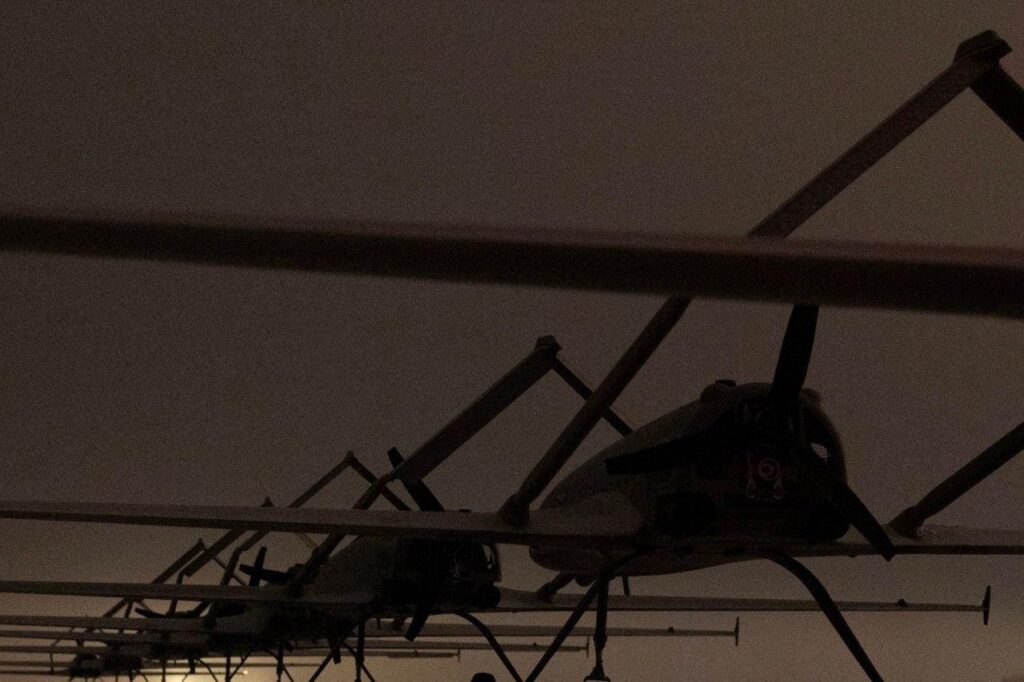Ukrainian surveillance drones.
14th UAS Regiment photo
Deploying millions of small explosive drones every month, Ukrainian forces have created a kill zone extending 16 miles behind the front line of Russia’s wider war on Ukraine.
Relentlessly striking troop formations, artillery, air-defense vehicles and—perhaps most importantly, supply lines—the drones have made life along the front line a nightmare for Russian troops.
“If you simply drive on any roads, you risk your life,” one Russian blogger wrote. “In principle, this has been the case for a year, since the spring of 2024, but now the frequency of attacks is much higher for the enemy.”
Ukrainian forces turned to small drones during the worst months of the prolonged ammunition shortage in early 2024. Now, a network of workshops all over Ukraine churns out more than 2 million small first-person-view drones—each weighing a few pounds and clutching a small warhead—every month.
The developers are constantly improving the drones with better warheads and jam-resistant controls, among other innovations.
In the 39th month of Russia’s wider war, the unmanned aerial vehicles now form a complex and constantly evolving system—one that has managed to stay ahead of Russian efforts to defeat it with armor, nets, shotguns and radio jammers.
“They fly in flocks,” the blogger explained, “with preliminary reconnaissance from aircraft-type UAVs.” Bomber drones lobbing small explosives back up the single-use explosive FPVs. And repeater drones, which capture and relay radio signals, extend the range of the smallest drones from just a few miles to 10 or more.
The Russians deploy millions of drones every month, too, but Ukrainian jamming is generally superior—and can ground many radio-controlled drones. Fiber-optic drones, controlled via signals traveling along miles-long fibers, are more difficult to defeat.
But fiber-optic drones are expensive, costing thousands of dollars apiece, compared to just hundreds of dollars for a wireless drone. And Ukraine’s long-range strike drones have been bombarding Russia’s fiber-optics factories in order to suppress production of these unjammable drones.
A new and more powerful Russian jammer called Black Eyes could shift the aerial balance of power over the front line. Serhii “Flash” Beskrestnov, a leading Ukrainian drone expert, called Black Eyes “dangerous.”
But the Ukrainians appreciate the risk—and have been hunting down the Black Eyes using specially-equipped FPV drones that communicate on non-standard frequencies that the Black Eyes can’t reliably block.
The result, for now, is that Ukraine has a drone advantage. That helps explain why, in recent months, Russian advances in eastern Ukraine have slowed to a crawl—and Russian casualties have increased.
The next step for Ukraine’s Unmanned Systems Forces, the independent military service overseeing the country’s millions of drones, may be to further extend the depth of the robotic kill zone.
The goal, according to analyst Andrew Perpetua, should be to add “layers of drone superiority” extending as far as 60 miles from the front line. Four times the current depth.
Read the full article here
